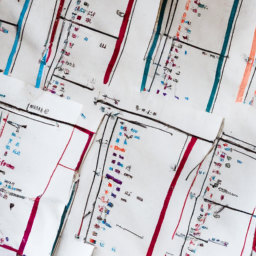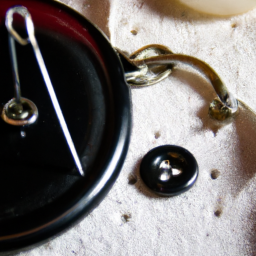
Introduction
When it comes to creative endeavors like sewing, copyright laws play a significant role in protecting designers’ rights. Sewing patterns, like other artistic creations, are indeed copyrighted under certain conditions. In this article, we will explore the subject in detail to help you understand the intricacies of sewing pattern copyright.
Understanding Copyright Laws
Before delving into the specifics related to sewing patterns, let’s first have a brief understanding of copyright laws. Copyright law grants exclusive rights to creators or authors of original works, allowing them to control the reproduction, distribution, and adaptation of their creations. This legal protection exists to encourage creativity and safeguard the rights of the creators.
In general, copyright protection extends to various forms of creative expressions, such as literary works, music, art, and even architectural designs. Sewing patterns fall within this creative domain.
Unique Aspects of Sewing Patterns
Sewing patterns comprise the detailed instructions and templates necessary for creating garments, accessories, or decorative items. They guide sewists in accurately cutting and assembling fabric pieces to achieve a desired final product.
Although sewing patterns themselves can be protected by copyright, it is important to note that the resulting garments, once created using those patterns, generally do not fall under copyright protection. This means that while someone cannot copy and distribute a sewing pattern without authorization, they are typically free to create garments using a pattern for personal use or even sell those finished products.
Obtaining Permission
If you wish to use a sewing pattern to create products for commercial purposes, it is crucial to obtain proper authorization from the copyright holder. Check whether the pattern designer has explicitly granted permission for such use by reviewing their licensing terms or contacting them directly. Many pattern designers now offer licenses that allow sewists to make and sell items from their patterns.
It’s important to respect copyright laws and the rights of creators. Unauthorized distribution or reproduction of sewing patterns is both illegal and unethical, as it undermines the intellectual property rights of designers and hampers their ability to earn a livelihood from their creations.
Infringement and Fair Use
If someone infringes on a copyright by reproducing or distributing a sewing pattern without permission, the copyright holder has the right to take legal action. However, it’s worth noting that the concept of “fair use” can be applicable under specific circumstances. Fair use allows limited use of copyrighted material without permission for purposes such as criticism, comment, news reporting, teaching, or research.
The exact scope and interpretation of fair use can vary depending on the jurisdiction and specific cases. Hence, it is advisable to consult a legal expert or refer to copyright laws in your country to understand how this principle applies to your situation.
Conclusion
Sewing patterns are indeed copyrighted under certain conditions. While the patterns themselves are protected, the items created using those patterns typically do not fall under copyright protection. However, permission from the pattern designer is necessary when using patterns for commercial purposes. Remember to respect copyright laws and support the creativity of designers by obtaining proper authorization and acknowledging their intellectual property rights. Happy sewing!
